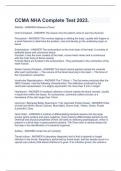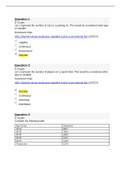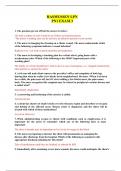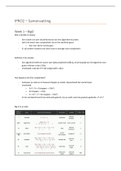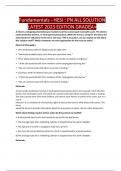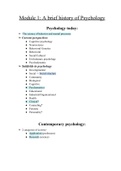Tentamen (uitwerkingen)
CCMA NHA Complete Test 2023.
CCMA NHA Complete Test 2023.Afebrile - ANSWER Absence of fever Chief Complaint - ANSWER The reason why the patient came to see the physician Percussion - ANSWER This involves tapping or striking the body, usually with fingers or a small hammer to determine the position, size and density go th...
[Meer zien]
